Teachers Explore Playful Activities in Day 3 of the Summer Seminar
August 1st, 2012
How can we make learning fun? By cultivating a playful spirit! And we certainly did just that in the third day of the Art & Language Arts Summer Seminar.
If you participated in today’s program, post a comment that describes one way that you can use play in your classroom to enhance student learning.
- Today’s media exploration focused on sculpture. Teachers came up with all sorts of imaginative sculptures using wire and clay.
- Teachers were encouraged to explore a variety of textures by using plastic utensils, straws, and modeling tools.
- Try using coated wire to add a playful, textural element to clay sculptures.
- Two teachers, two colorful bowls, two different ways!
- When given the opportunity to use your imagination, a variety of subjects emerge–both living and man-made sculptures were created.
- Our extraordinary and talented intern Iris Hu is to blame for all the fun teachers had while exploring clay.
- And museum educator Theresa Sotto is to blame for making teachers read articles after making art.
- Curator Charissa Bremer-David captivated teachers by describing the history of this magnificent bed.
- Charissa demonstrates the swiveling action of a chair on which Marie Antoinette once sat while her servants fixed her hair.
- It’s amazing to be able to peek inside desks we’re not allowed to touch. Thank you, Charissa!
- Can you see the mark of the desk’s maker near Charissa’s right hand?
- Charissa’s talk is both informative and entertaining, as evidenced by our huge smiles.
- We gaze up at a chandelier that was designed to hold goldfish in its glass bowl.
- Upper elementary teachers pause for a Kodak moment.
- Graduate intern Elizabeth Osenbaugh leads a tour of the sculpture collection.
- Teachers look closely at the textures that Bernini was able to render in this marble sculpture when he was only 19 years old.
- This object is affectionately known internally as the “little pot.”
- Museum educator Kelly Williams explains a writing activity that teachers can do with our decorative arts collection.
- Teachers tell their partners about all the details they can find in a work of art.
- Our period rooms are terrific places to go to transport students back in time.
- Inspired by Franz Xaver Messerschmidt’s Vexed Man, teachers created their own expressive heads thanks to the guidance of teaching artist Judy Blake.
- Look at the fantastic details on that sculpture!
- So much expression can be communicated in sculptures no taller than three inches.
- The creativity of the teachers shine through in this “class picture.”
- After working with sculpture, teachers were invited to create dream beds and place them in settings.
- The playful nature of this activity is evident!
- Who doesn’t want a feather bed?
- Perhaps all beds should have feathers.
- A bed fit for a queen.
- A boat-shaped bed sets sail.
Categories:
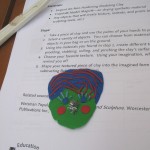
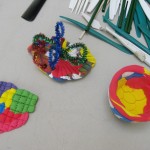


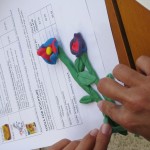

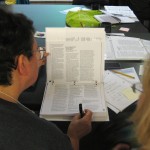


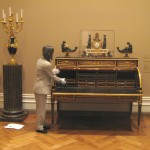









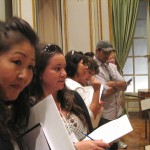




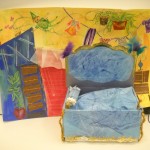


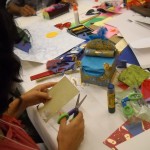
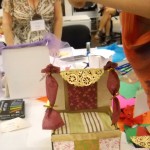

Turning work into play: We can add fun to lessons just by going out of the classroom. a lesson on sketching can be given on the playground. Students can sketch the school building or a tree. It is also great to explore the textures by actually touching the building or touching the tree. …. fun with a joke: What is the difference between the death of a barber and the death of a sculptor???
One curls up and dies and the other makes faces and busts!
My students love to give clues when they share an experience or an object from home, and the resulting guessing game builds verbal, comprehension, listening and critical thinking skills on both sides.
Another favorite game activity is the “bee,” which can be used for almost any skill in virtually every subject area. The room is divided into two teams, and students take turns going to the board to perform the given skill when prompted by the teacher (e.g., spelling a word, solving a math problem). Half points are given for effort even when answers are wrong, so that everyone can contribute to total points – and all efforts are applauded. This is a great activity for afternoon (when students may be especially restless!), because points are also given to the opposing team whenever someone talks or makes noise. It’s amazing how quiet children can be when they are trying to win a game! They all focus on the problem at the board (and what they think the answer should be) not only because they have to be quiet, but also because they are anxious to see if the outcome is more earned points. (Whenever possible, have the students who are not at the board quietly write their answers on a paper or white board every time so they stay academically engaged for the entire game.)
Another game I play to build critical thinking skills is “Guess Who’s Missing.” Using name sticks pulled at random, one student goes out of the room (if the next-door teacher can accommodate), or in some other way is kept from hearing and seeing what the others are doing. A second student hides, and the remaining students change seats so that everyone is mixed up. When the first student comes back to the room, he/she must use critical thinking skills to figure out who is hiding. (Is a girl missing, or is a boy missing? If I look for everyone who normally sits in the front row, are they all here? – etc.) I give clues and prompts to the students who need them. This is a great game for the beginning of the year (do a few each day) because it helps everyone get to know each other.
A learning activity that comes to mind that motivates conversation, laughter, and creativity is play dough. Children absolutely love it. Anytime play dough becomes a choice children are automatically drawn to it. I love it because it helps their fine motor, they are able to work together, share materials and it’s a wonderful time for children to talk to one another in a non threatening environment.
One way to link the use of sculpting with modeling clay to the content areas is using it to replicate Land forms in 4th grade. I am also planning on using modeling clay to form, discuss, and identify solid figures as a link to Math. After this, we could create a sculpture that requires one or more solid figures.